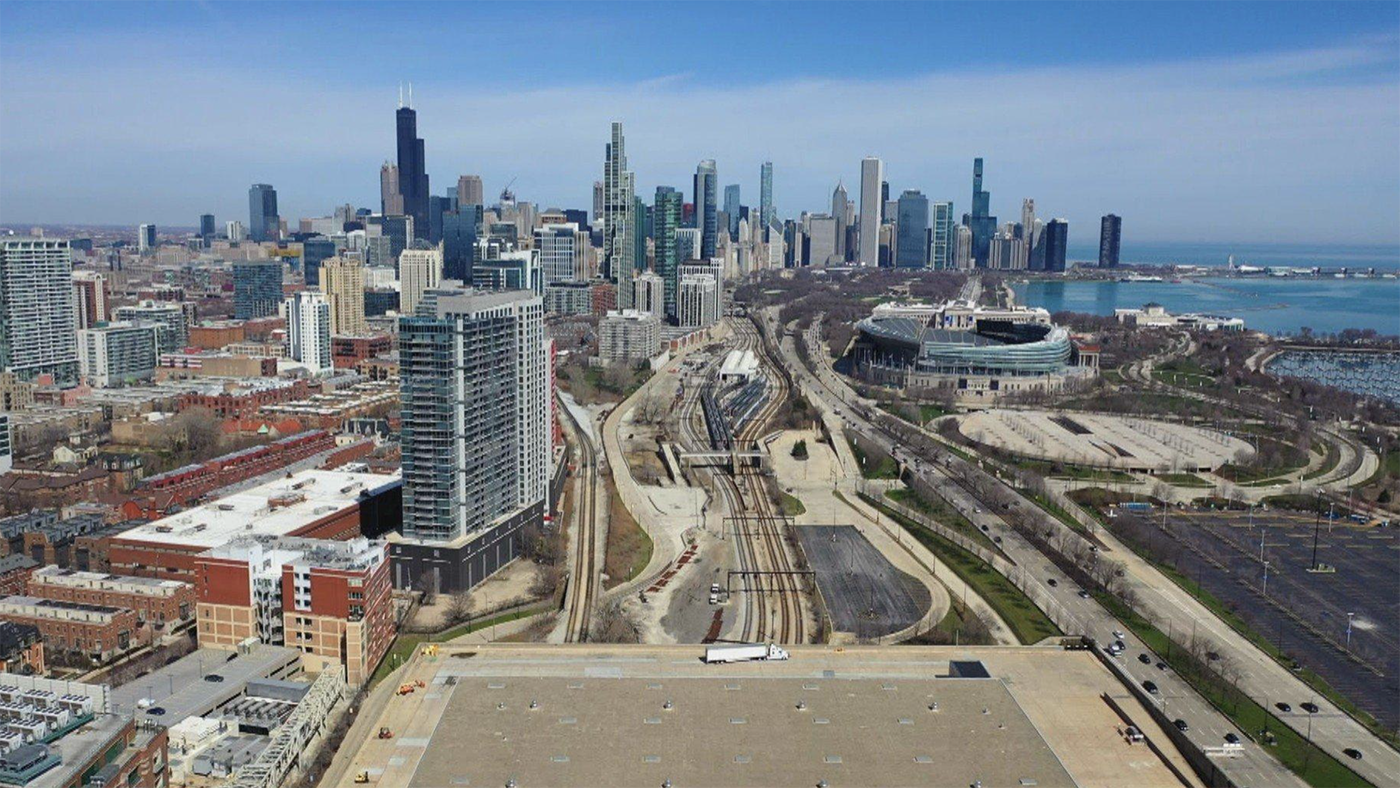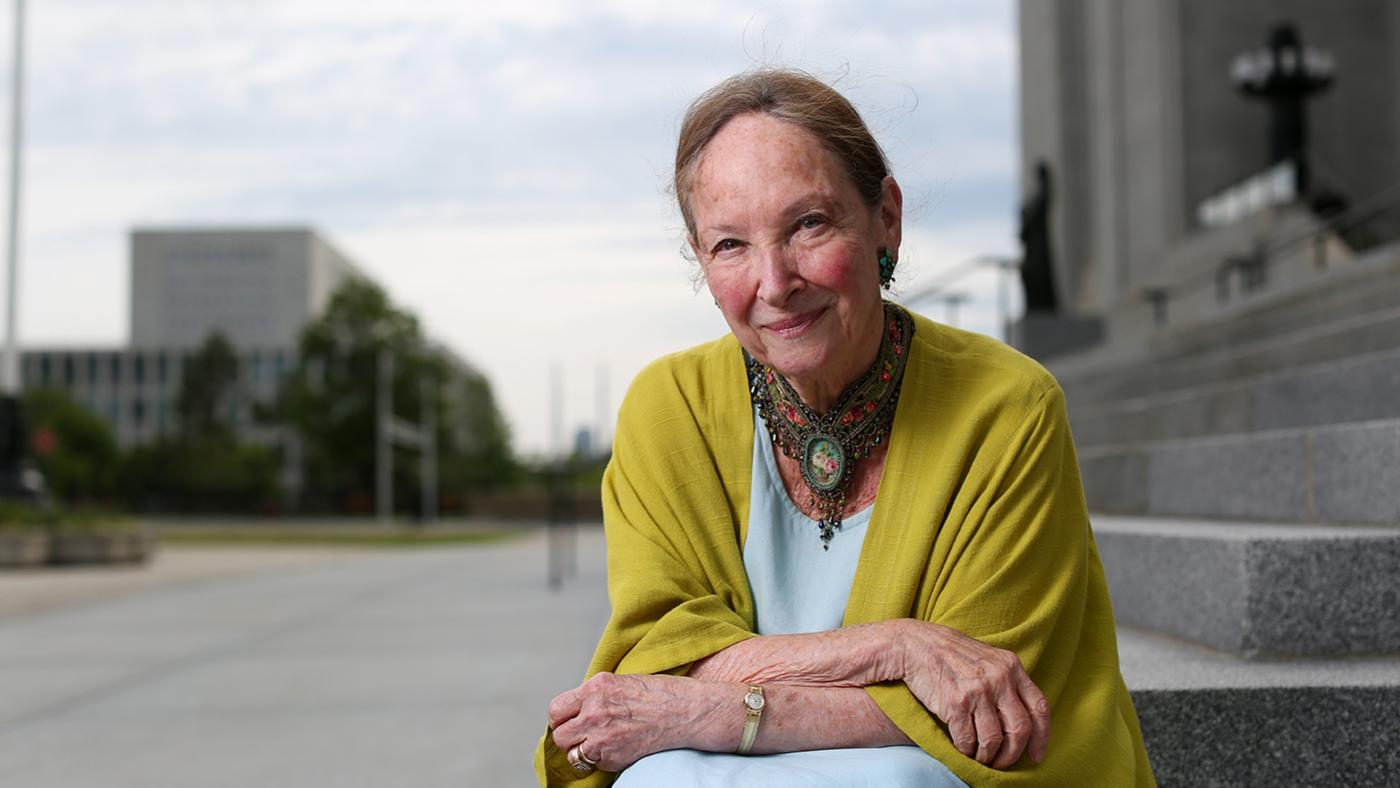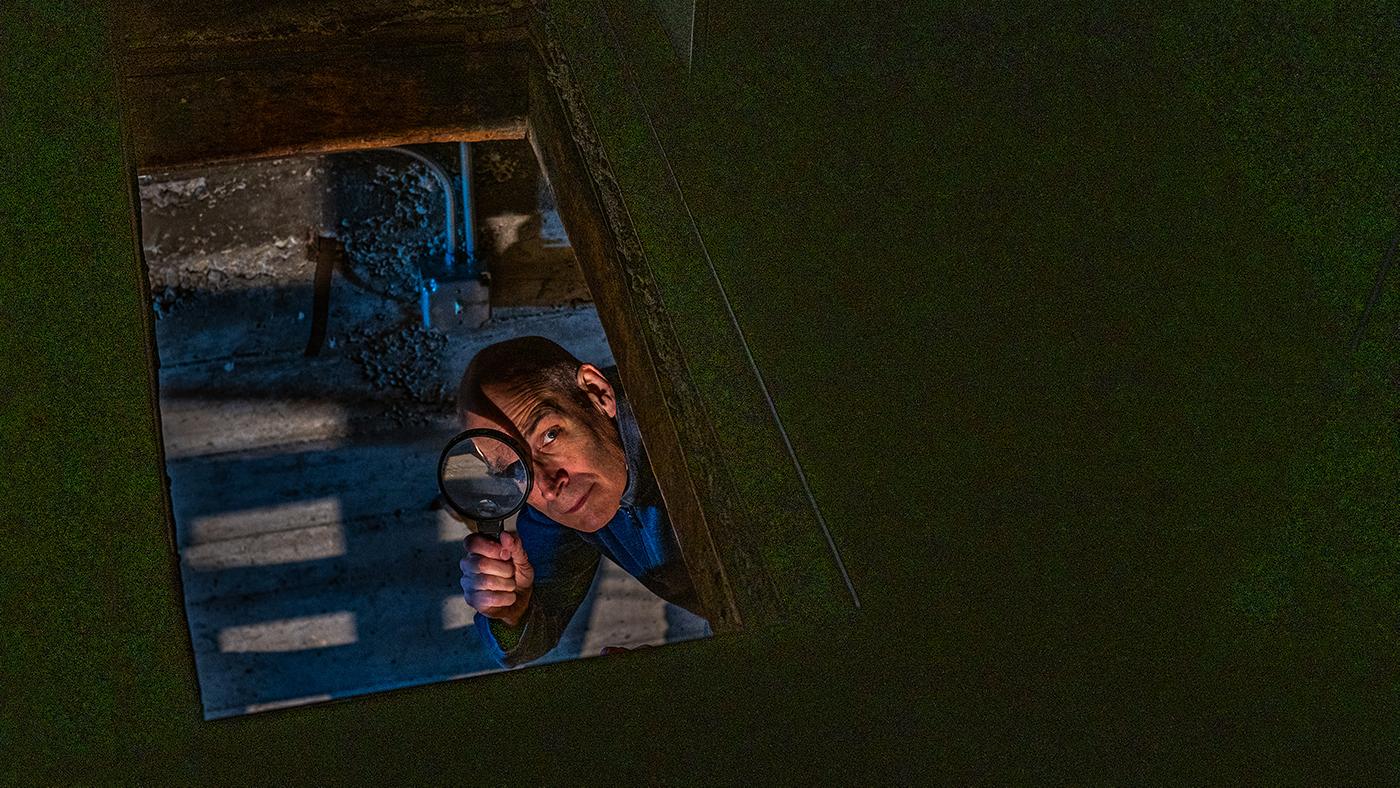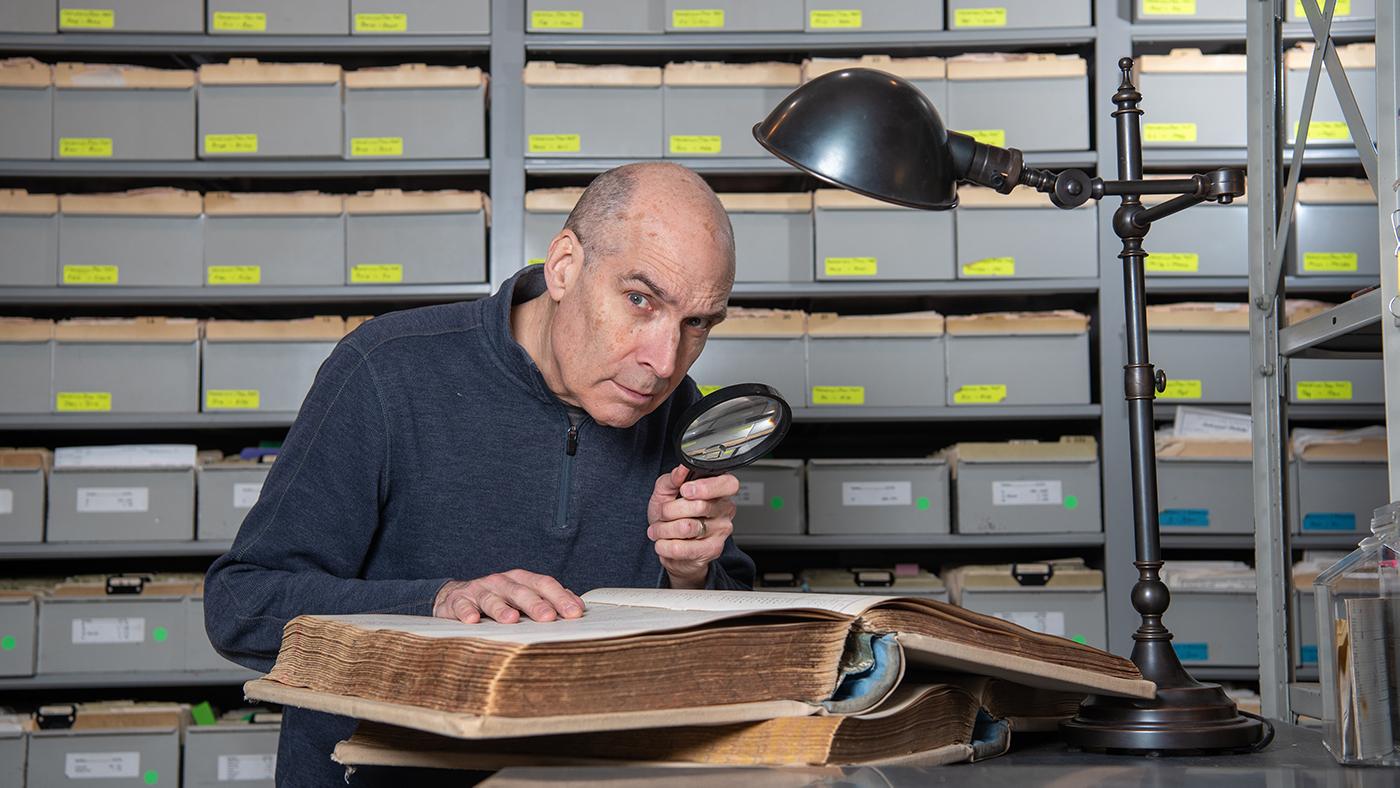Meet One of the Genealogists Who Tracks Down Ancestors on ‘Finding Your Roots’
Daniel Hautzinger
May 10, 2023

Finding Your Roots is available to stream by WTTW Passport members.
When Nick Sheedy tells people what he does for a living, they almost always begin talking about a past relative who they think has a fascinating story. Sheedy, a lead genealogist for the PBS show Finding Your Roots, enjoys digging into family histories.
“I can go ask anyone on the street, and they will have a grandmother, or a great-grandmother, or a grandfather, or an aunt, or somebody special that they will talk your ear off about,” he said on a recent stop in Chicago for a WTTW event.
One of the only people he has met who is not interested at all in their family history? His father. “If I start to tell him anything about our family tree, he’ll cut me off. He’d rather talk about the weather,” Sheedy said, laughing.
Even though he didn’t inherit it from his father, Sheedy, who has intent blue eyes behind horn-rimmed glasses and wears a heavy signet ring, is a born genealogist. He has always been interested in history, especially of the American frontier and the mining and trade that drove its expansion. While working in forestry, he often traveled, and would find time to dig into historical records in places like libraries, archives, and genealogical societies to indulge his interest.
He was also curious about his own family history and had rich veins to mine there. He grew up with all four grandparents, and was 26 when his last great-grandfather died. “He was 27 when his grandfather died, and his grandfather was born in 1836,” Sheedy said of that great-grandfather. “So I got secondhand stories that his grandfather told him.” Amazingly enough, “on this side of the family, every story that they told, down to every little detail, has been accurate”—unlike stories from his grandmother’s cousin, Adele, he added with a chuckle.
Sheedy’s mother was born in Ohio, in a town where her family has lived for 200 years. The library there is named after them, as is the genealogy room inside it—so there was plenty to learn about Sheedy’s family when he visited Ohio, too.
Sheedy eventually found himself in Salt Lake City, “genealogy central.” The Church of Latter Day Saints, which is headquartered there, has collected an enormous collection of genealogical and historical records, because Mormons believe in performing religious rites for deceased relatives who did not undergo them in life, a pursuit that requires in-depth knowledge of your family tree.
“It was at that point that I said, ‘I have the skill set,’” Sheedy recalled. “I had done a little professional research work, [so] I just threw my resume around” to genealogy companies based in Salt Lake City. He ended up working for Johni Cerney, a foundational figure in modern genealogical research who died at the beginning of 2020. Cerney not only did private genealogical research for clients but also led a team that worked on PBS shows for Henry Louis Gates, Jr., including Finding Your Roots.
Sheedy is one of three genealogists for Finding Your Roots. Each takes the lead in investigating a guest on the show, with the help of a three-person team and often an intern from the production company that makes the show. Frequently, the team has to hire a researcher in another country to get access to records on the ground. The genetic genealogist CeCe Moore does her own searching and matching of relatives via DNA.
“Sometimes we get a surprise,” Sheedy said. “We’ve done work to map out a whole pedigree, only to find out when the DNA comes in [that] somebody’s father wasn’t their father.” Hours of work researching a family line are rendered irrelevant for the show.
That happened with one of Sheedy’s favorite guests from the most recent season of Finding Your Roots, the actor Joe Manganiello. The man Manganiello thought was his grandfather on his father’s side was not in fact biologically related. “A quarter of the family tree goes away,” said Sheedy. “And we start over with a new pedigree.”
Sheedy admitted that such a setback is frustrating, “because you don’t get any of that time back. And we hired someone in Sicily to flush out the Manganiello lines. His cousins can use it, because his aunts and uncles are biologically related, so we gave him another family tree chart and said, ‘You can give this one to your cousins!’ ”
That extra research still ends up being enlightening to someone—and part of why Sheedy enjoyed working on Manganiello’s family tree, in addition to its “twists and turns,” is that the actor wants to continue learning more about his ancestry. “He’s been the most engaging guest after an interview,” Sheedy said. “He’s going, he will run with it. He actually would love to do something more, like visit the places where his ancestors live.”
Sheedy thinks such interest in ancestry and genealogy, which has become a multi-billion dollar business, is driven in part by an “almost tribal” impulse. “People want to have a sense of community,” he said. “You want to have a feeling that you belong and that there’s a community out there that belongs to you. That is in our DNA going back tens of thousands of years: these are my people. And, ‘Who are my people? What are their stories?’ I think that that is something very basic to humanity, that my story is part of this larger story.”







